1. Definition
1.1. Trust
1.1.1. Plan Communication
1.1.1.1. Existing Work
1.1.1.1.1. Stakeholder Model
1.1.1.1.2. Stakeholder Influence Priorities
1.1.1.1.3. Organization Resources
1.1.1.2. Methods and Tools
1.1.1.2.1. Analyze Communication Needs of Stakeholders
1.1.1.2.2. Analyze Media and Collaboration Platforms
1.1.1.2.3. Select Media and Collaboration Platform
1.1.1.2.4. Assign Responsibilities
1.1.1.3. Work Product
1.1.1.3.1. Communication Plan
1.1.1.3.2. Untitled
1.2. Purpose
1.2.1. Plan Change Control
1.2.1.1. Existing Work
1.2.1.1.1. Project Assignment
1.2.1.1.2. Stakeholder Model
1.2.1.1.3. Business Context Model
1.2.1.1.4. Project Definition Document
1.2.1.2. Methods and Tools
1.2.1.2.1. Lead Collaborative Systems Work
1.2.1.2.2. Collaboration Platform
1.2.1.2.3. Workflow Models
1.2.1.3. Work Product
1.2.1.3.1. Change Control Plan
2. Planning
2.1. Risk
2.1.1. Plan Risk Management
2.1.1.1. Existing Work
2.1.1.1.1. Business Context Model
2.1.1.1.2. Project Model
2.1.1.1.3. Planning Work in Progress (Planning WIP)
2.1.1.2. Methods and Tools
2.1.1.2.1. Risk Breakdown Structure
2.1.1.2.2. Risk Response Planning Methods
2.1.1.2.3. Lead Collaborative Systems Work
2.1.1.2.4. Collaboration Platform
2.1.1.3. Work Product
2.1.1.3.1. Risk Management Plan
2.2. Quality
2.2.1. Plan Quality
2.2.1.1. Existing Work
2.2.1.1.1. Stakeholder Model
2.2.1.1.2. Business Context Model
2.2.1.1.3. Project Definition Document
2.2.1.1.4. Risk Model
2.2.1.1.5. Scope Model
2.2.1.2. Methods and Tools
2.2.1.2.1. Ishikawa Toolset
2.2.1.2.2. Modeling Tools
2.2.1.2.3. Negotiate
2.2.1.2.4. Lead Collaborative Systems Work
2.2.1.2.5. Collaboration Platform
2.2.1.3. Work Product
2.2.1.3.1. Quality Plan
2.2.1.3.2. Quality Updates to Scope
2.3. Resources
2.3.1. Plan Purchases
2.3.1.1. Existing Work
2.3.1.1.1. Business Context Model
2.3.1.1.2. Organization Resources
2.3.1.1.3. Risk Model
2.3.1.1.4. Requirements Model
2.3.1.1.5. Scope Model
2.3.1.1.6. Planning Work in Progress (Planning WIP)
2.3.1.1.7. Task Network
2.3.1.1.8. Task Resource Estimates
2.3.1.1.9. Task Cost Estimates
2.3.1.1.10. Resource Breakdown Structure
2.3.1.2. Methods and Tools
2.3.1.2.1. Project Scheduling Software (PSS)
2.3.1.2.2. Make or Buy Analysis
2.3.1.2.3. Lead Collaborative Systems Work
2.3.1.2.4. Contract Types
2.3.1.2.5. Collaboration Platform
2.3.1.3. Work Product
2.3.1.3.1. Purchasing Plan
2.3.2. Plan Human Resources
2.3.2.1. Existing Work
2.3.2.1.1. Business Context Model
2.3.2.1.2. Organization Resources
2.3.2.1.3. Task Resource Estimates
2.3.2.1.4. Resource Breakdown Structure
2.3.2.2. Methods and Tools
2.3.2.2.1. Network
2.3.2.2.2. Modeling Tools
2.3.2.2.3. Make or Buy Analysis
2.3.2.2.4. Organization Charts
2.3.2.2.5. Role Descriptions
2.3.2.2.6. Workflow Models
2.3.2.2.7. Lead Collaborative Systems Work
2.3.2.2.8. Collaboration Platform
2.3.2.3. Work Product
2.3.2.3.1. Human Resources Plan
2.4. Schedule
2.4.1. Plan Schedule
2.4.1.1. Existing Work
2.4.1.1.1. Business Context Model
2.4.1.1.2. Planning Work in Progress (Planning WIP)
2.4.1.1.3. Scope Model
2.4.1.1.4. Task Network
2.4.1.1.5. Critical Path Model
2.4.1.1.6. Resource Calendars
2.4.1.2. Methods and Tools
2.4.1.2.1. Analyze Schedule Network
2.4.1.2.2. Use Expertise
2.4.1.2.3. Level Resources
2.4.1.2.4. Compress Schedule
2.4.1.2.5. Lead Collaborative Systems Work
2.4.1.2.6. Project Scheduling Software (PSS)
2.4.1.2.7. Collaboration Platform
2.4.1.3. Work Product
2.4.1.3.1. Project Schedule
2.5. Budget
2.5.1. Plan Budget
2.5.1.1. Existing Work
2.5.1.1.1. Contracts
2.5.1.1.2. Business Context Model
2.5.1.1.3. Scope Model
2.5.1.1.4. Planning Work in Progress (Planning WIP)
2.5.1.1.5. Resource Calendars
2.5.1.1.6. Project Schedule
2.5.1.2. Methods and Tools
2.5.1.2.1. Aggregate Costs
2.5.1.2.2. Analyze Reserves
2.5.1.2.3. Use Expertise
2.5.1.2.4. Use Historical Relationships
2.5.1.2.5. Analyze Supplier Bids
2.5.1.2.6. Collaboration Platform
2.5.1.2.7. Project Scheduling Software (PSS)
2.5.1.2.8. Reconcile Budget with Funding Limit
2.5.1.3. Work Product
2.5.1.3.1. Project Budget
2.5.1.3.2. Updates to Project Models
2.5.1.3.3. Updates to Project Plans
2.5.2. Plan Project
2.5.2.1. Existing Work
2.5.2.1.1. Project Assignment
2.5.2.1.2. Business Context Model
2.5.2.1.3. Project Definition Document
2.5.2.1.4. Change Control Plan
2.5.2.1.5. Planning Work in Progress (Planning WIP)
2.5.2.1.6. Project Schedule
2.5.2.1.7. Project Budget
2.5.2.2. Methods and Tools
2.5.2.2.1. Use Expertise
2.5.2.2.2. Reestimate the project
2.5.2.2.3. Leverage schedule float
2.5.2.2.4. Add Resources
2.5.2.2.5. Lead Collaborative Systems Work
2.5.2.2.6. Handle Conflict
2.5.2.2.7. Reconcile Budget with Funding Limit
2.5.2.2.8. Collaboration Platform
2.5.2.2.9. Configuration Planning Methods
2.5.2.2.10. Project Scheduling Software (PSS)
2.5.2.3. Work Product
2.5.2.3.1. Project Management Plan (PM Plan)
